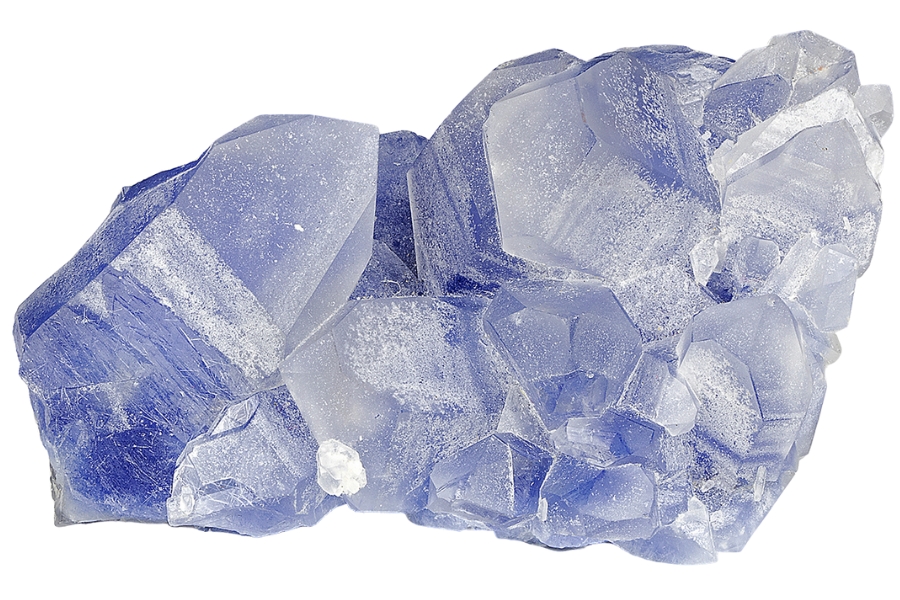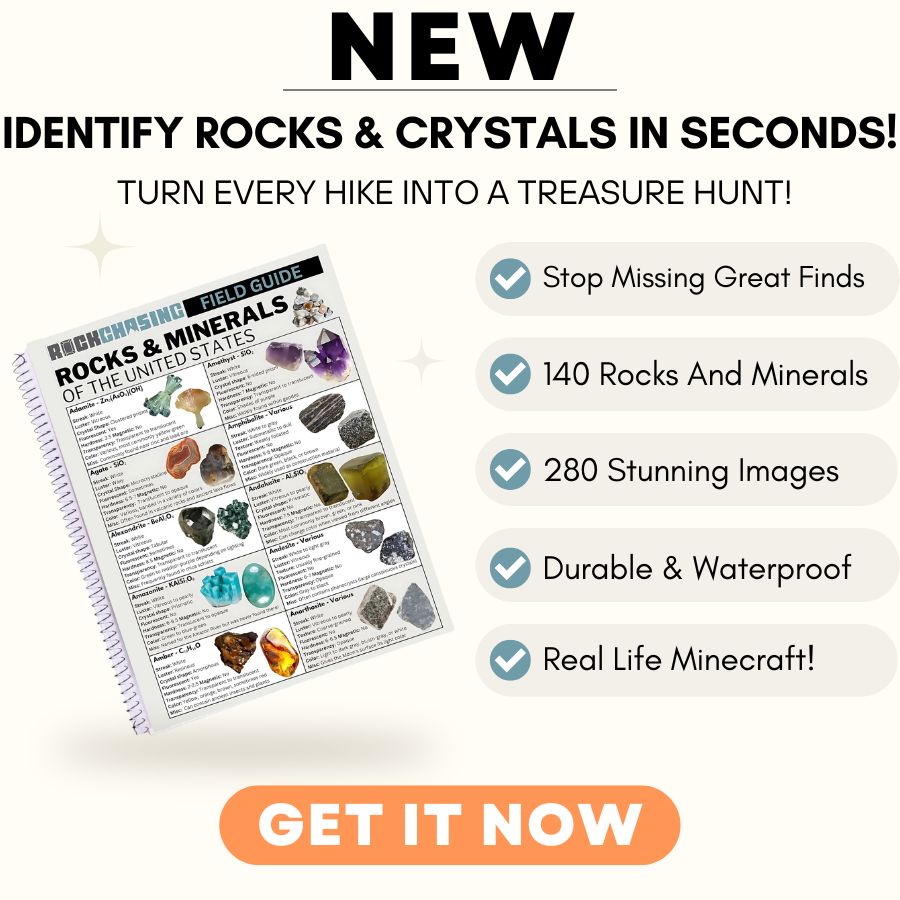Finding crystals can be a rewarding adventure, offering a unique way to explore the natural beauty and geology of the region. Whether you’re a seasoned rockhound or just getting started, knowing where to look is key to uncovering these hidden treasures.
In this state, a variety of locations provide opportunities to discover different types of crystals. From rocky outcrops in the mountains to stream beds that carry sparkling surprises, each area offers its own unique finds for those willing to search.
We can help you get started with some places you can explore for crystals below!
Crystals you can find in the US
The United States offers a wide range of crystals that reflect its diverse geology. From vibrant gems to more subtle mineral formations, there’s something to discover in nearly every region.
Calcite
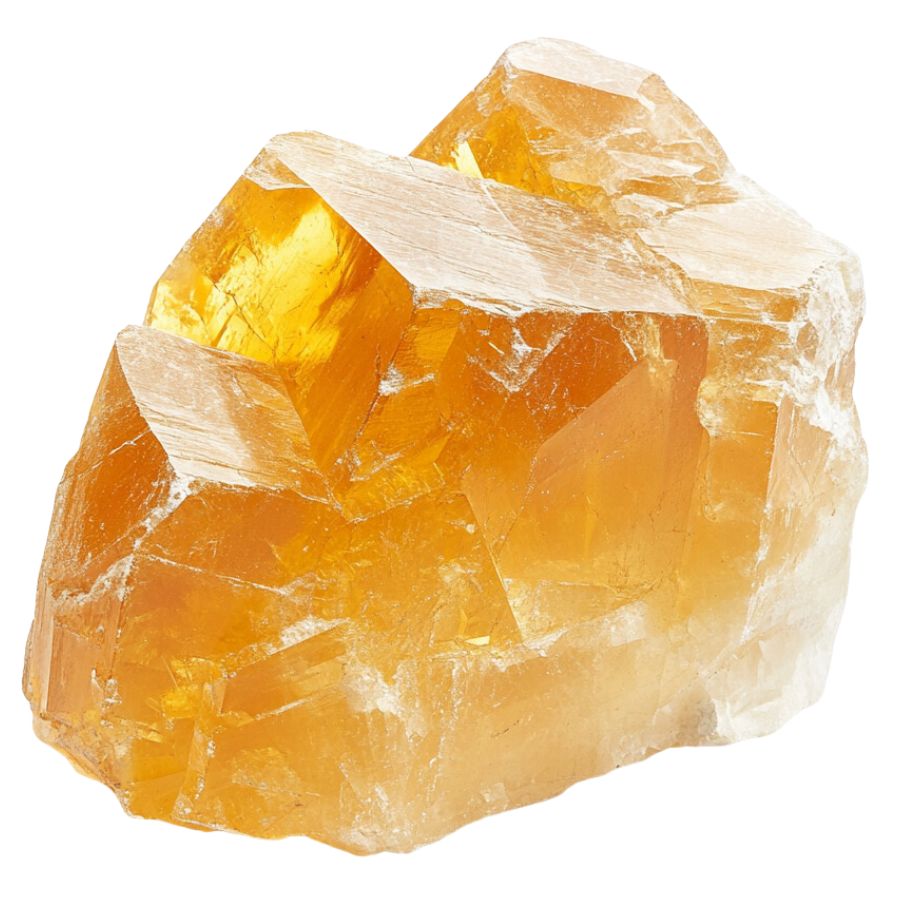
With a variety of forms and a unique property of double refraction, calcite allows objects viewed through the crystal to appear doubled. This mineral can appear in a spectrum of colors, with pure forms typically being transparent or white.
In addition, calcite reacts vigorously with acids, which aids in distinguishing it from other minerals. It also frequently contributes to the structure of sedimentary rocks such as limestone.
Gypsum
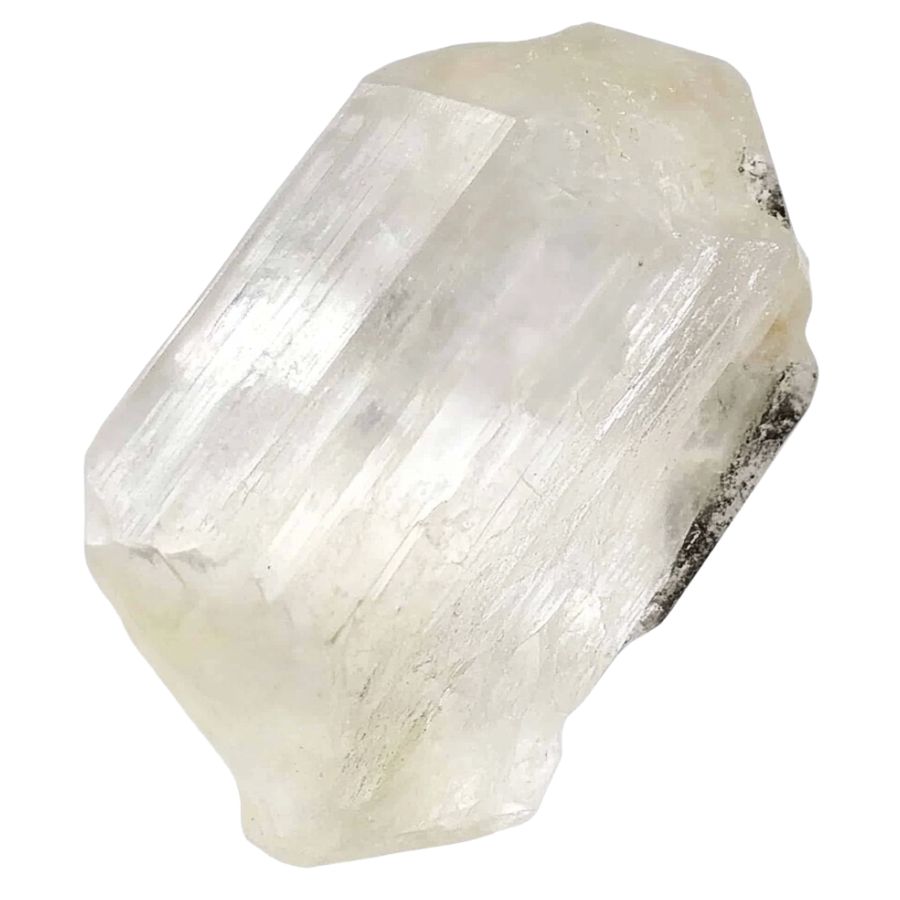
Gypsum’s notable softness allows it to be easily scratched with just a fingernail, often presenting as white or very light-colored in its pure form.
It manifests in both crystalline forms, like selenite, and massive forms such as alabaster, making it versatile in use and appearance.
Gypsum is also essential in the construction industry and is a key component in the manufacture of plaster and drywall.
Fluorite
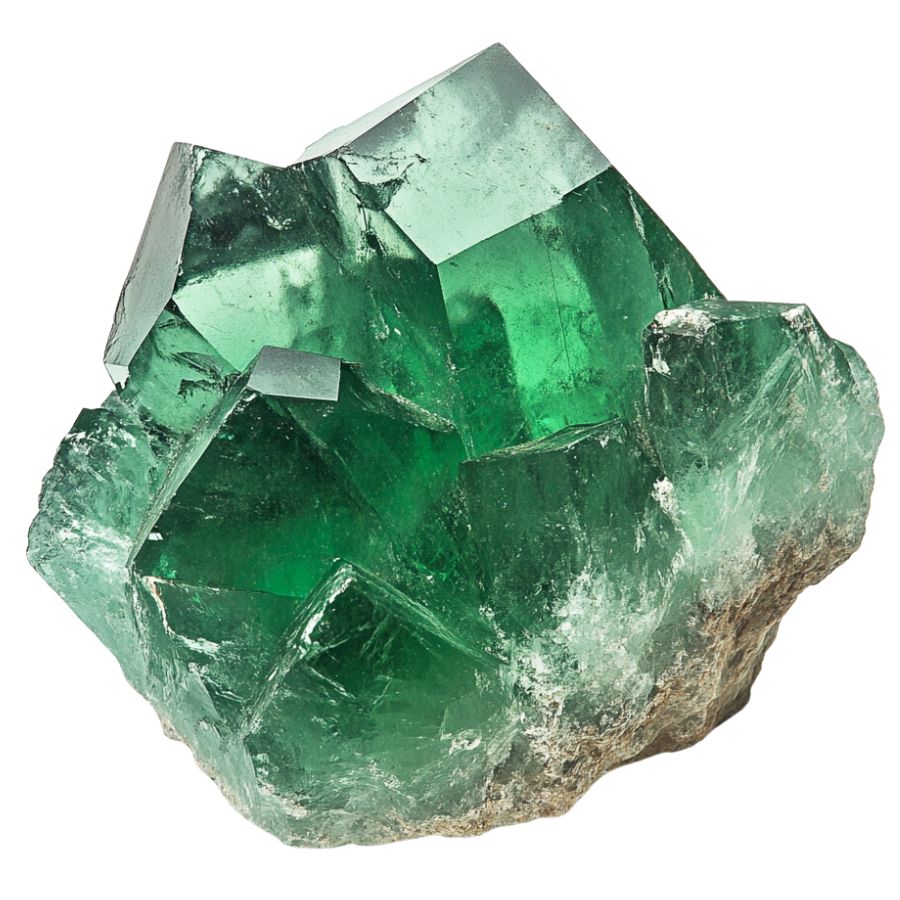
Fluorite comes in a wide range of vibrant colors, including purples, greens, blues, and yellows, and is known for forming in well-defined cubic crystals.
Beyond this, fluorite exhibits fluorescence under ultraviolet light! It can also be used in various industrial applications, including as a flux in steelmaking.
Galena
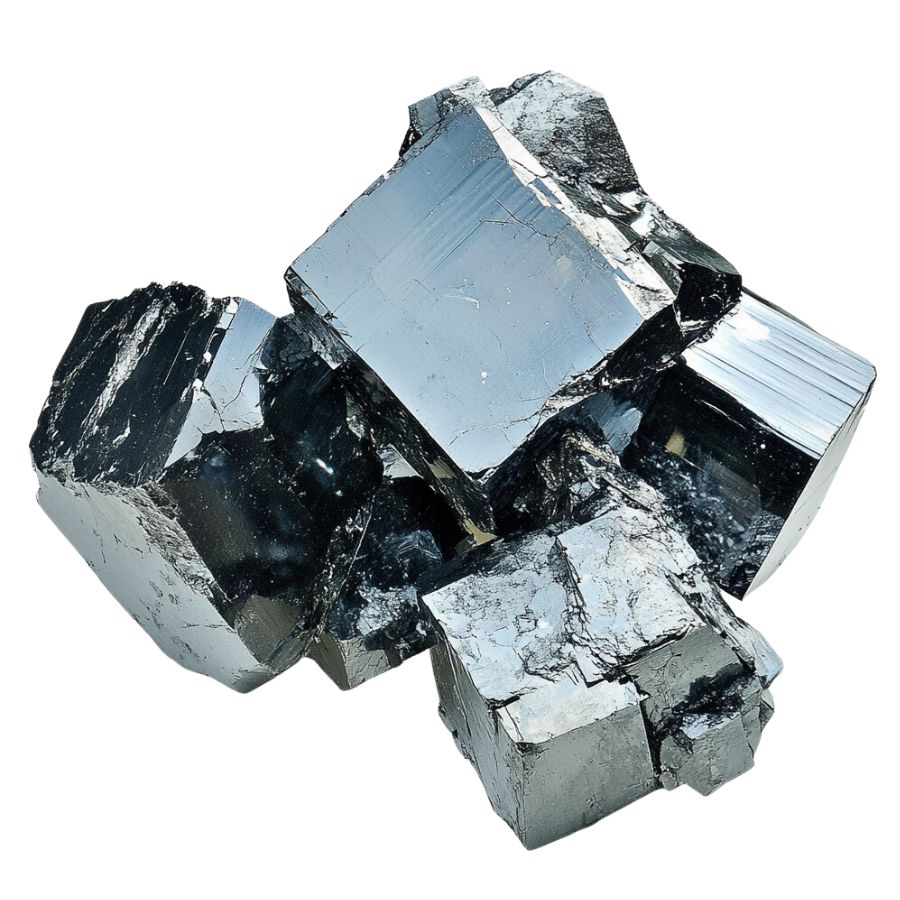
Galena distinguishes itself with a metallic luster and high density, typically found in a cube-like form. It serves as the primary ore of lead, making it important in the metal industry, while its shiny, silver color attracts collectors.
Not only does its appearance make it a subject of interest, but its weight and texture provide tangible lessons in mineral density and metallic properties. Galena also often contains traces of silver, adding to its commercial and educational value.
Corundum
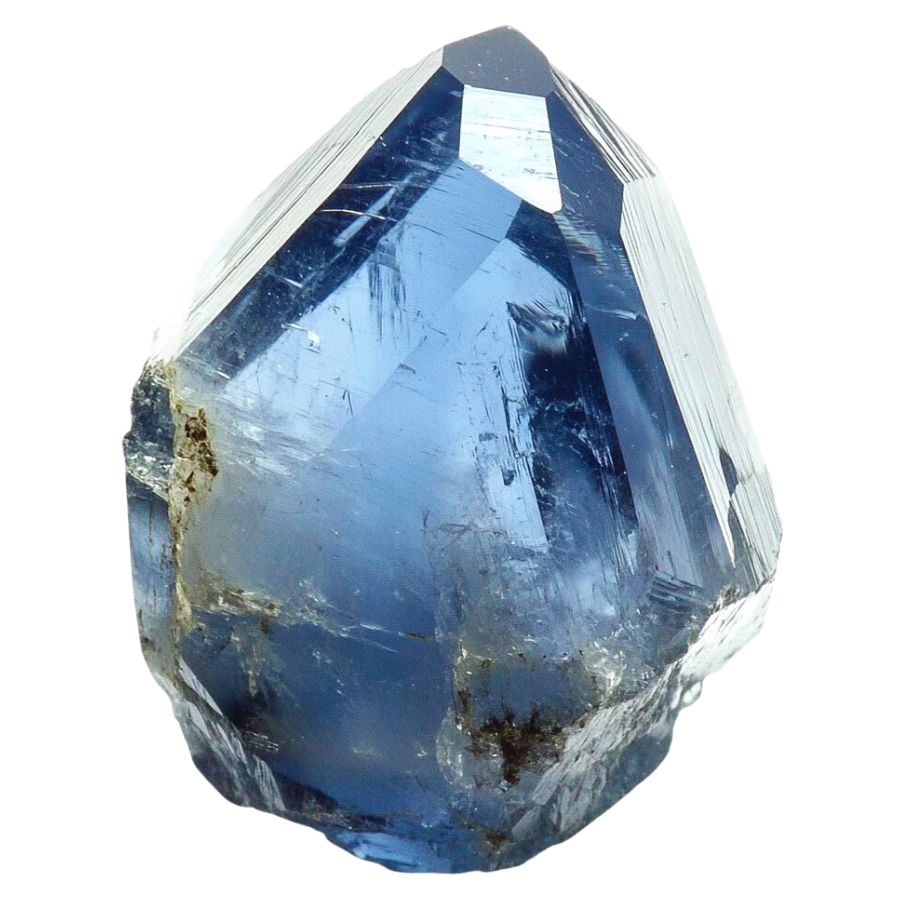
Corundum is a mineral that comes in a variety of colors, though it is typically transparent or gray. Its most famous forms are sapphires and rubies, which are prized for their vibrant blue and red hues.
The mineral is known for its remarkable hardness, ranking just below diamond on the Mohs scale. This durability makes corundum ideal for industrial abrasives and cutting tools, as well as a popular choice for fine jewelry.
Quartz
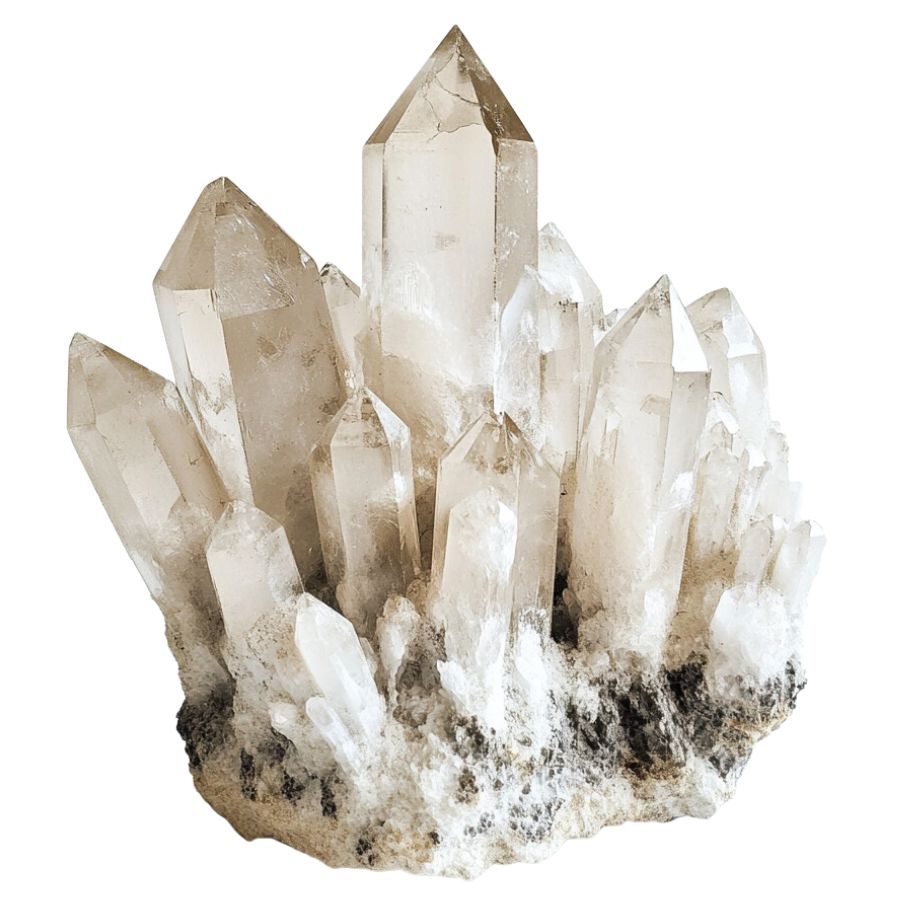
Quartz is among the most common minerals in the Earth’s crust and is prized for its durability and variety. It forms in a wide range of colors and types, from clear rock crystal to purple amethyst.
The mineral is notable for its hardness and durability, which contribute to its use in a variety of applications. Quartz is also popular in the manufacturing of electronics and watches due to its piezoelectric properties, which allow it to convert mechanical pressure into electrical energy.
Pyrite
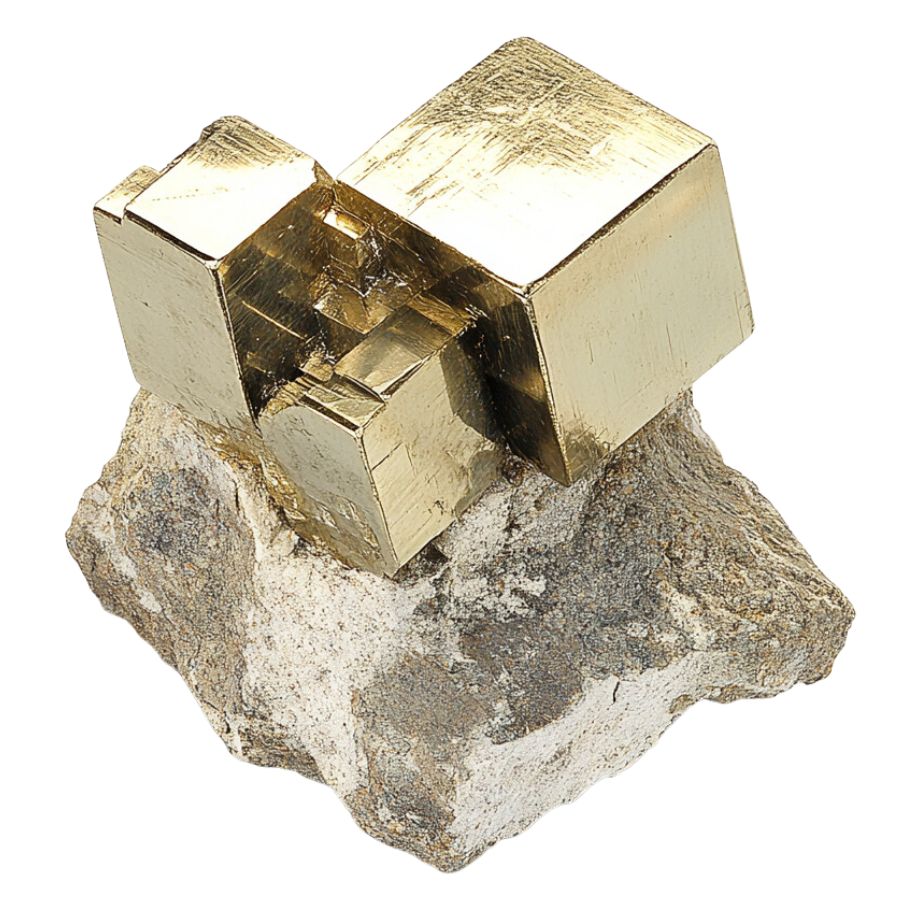
Often mistaken for gold due to its metallic luster and pale brass-yellow hue, pyrite is known colloquially as “fool’s gold.” Its characteristic cube-shaped crystal formations look man-made but are actually completely naturally formed!
Pyrite also has historical importance in producing sulfur dioxide for sulfuric acid production.
Rhodochrosite
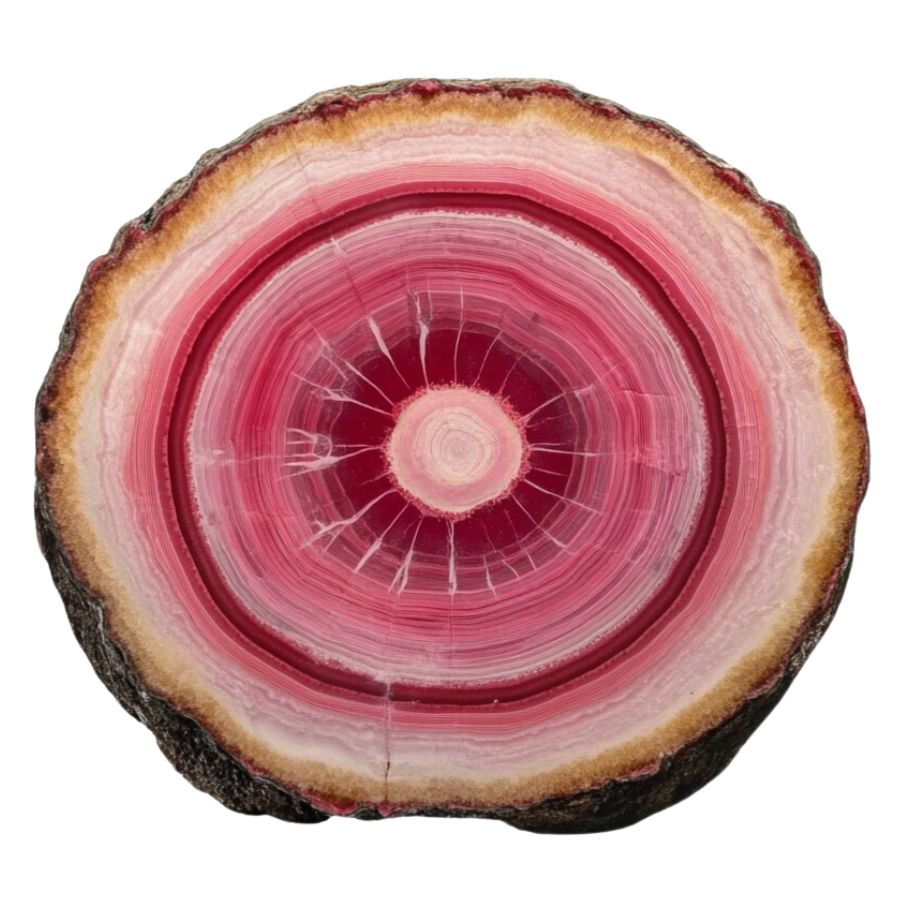
Rhodochrosite stands out with its rich pink and red hues, making it highly desirable as both a mineral specimen and a gemstone.
It typically forms in layered or stalactitic structures, with bands of colors that showcase how it grew over millions of years.
Beyond its beauty, rhodochrosite is significant as the main source of manganese, an essential element used in metal alloys.
Rhodonite
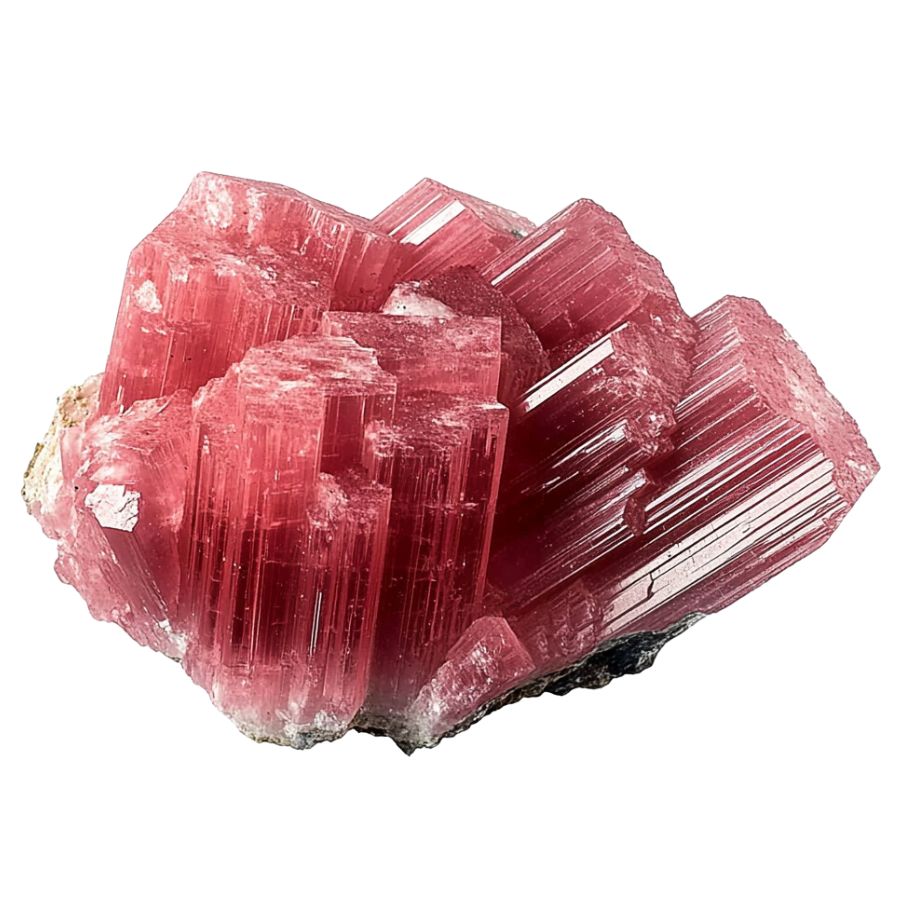
Appreciated for its deep pinks and reds, often complemented by black manganese oxide veins, rhodonite presents a dramatic appearance. It is typically found in metamorphic rocks and is used both as an ornamental stone and in jewelry.
In geology, rhodonite is significant for its role in metamorphic processes and its association with other manganese-rich minerals. It can be found in metamorphosed sedimentary rocks and is sometimes used as an indicator of the presence of manganese deposits.
Vivianite
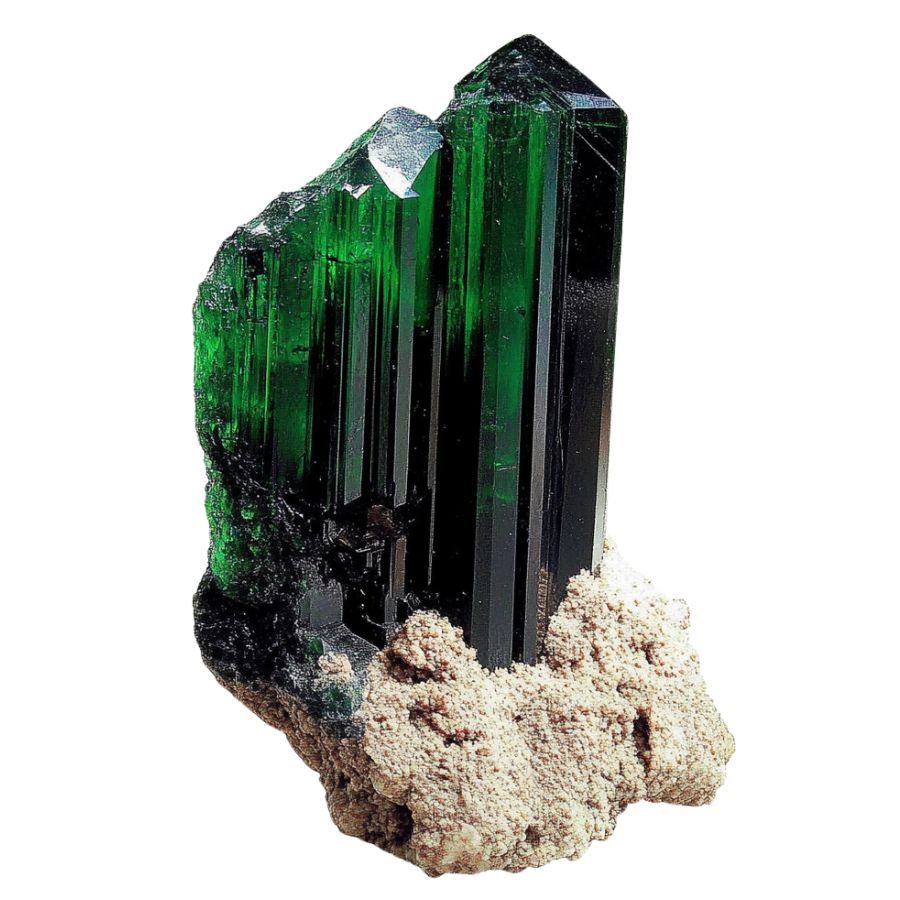
Vivianite, an iron phosphate mineral, emerges in low-oxygen environments like peat bogs or iron-rich deposits. Its striking blue to green color, which can change to a lighter shade over time due to oxidation, makes it a distinctive mineral.
Found in various geological settings, vivianite provides clues about the local conditions and the presence of phosphate deposits.
The Types of Crystals We Found
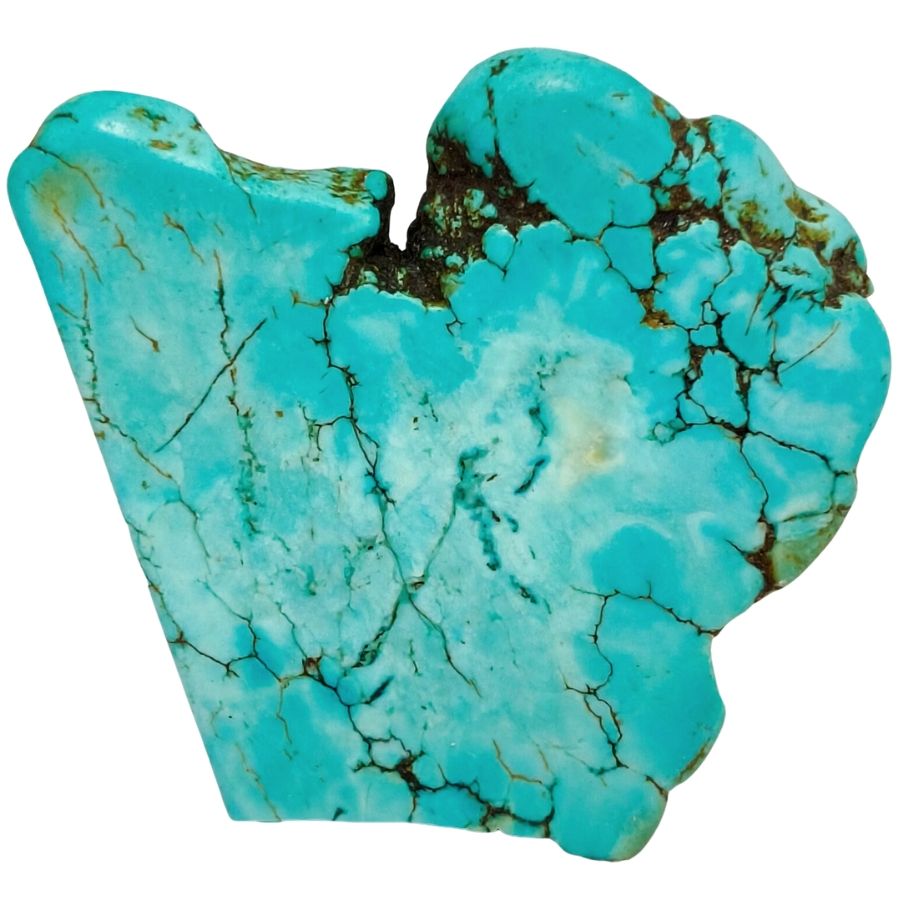
Crystals are truly unique rocks that show the stunning beauty of nature’s work. The possibilities are endless as the desert, and each find brings special charm and value.
Our trip to Nevada’s crystal-hunting hotspots and fascinating rockhounding locations will take you on an unforgettable adventure into the heart of this mineral-rich wonderland!
Rare crystals found in Nevada
- Amethyst
- Chrysocolla
- Citrine
- Dumortierite
- Hematite
- Obsidian
- Onyx
- Opal
- Rhodonite
- Rose Quartz
- Quartz
More common crystals found here
What rough crystals look like
When you’re out looking for crystals on your own it’s important to know what you’re looking for. This is what you need to look out for:
Look for exteriors like this
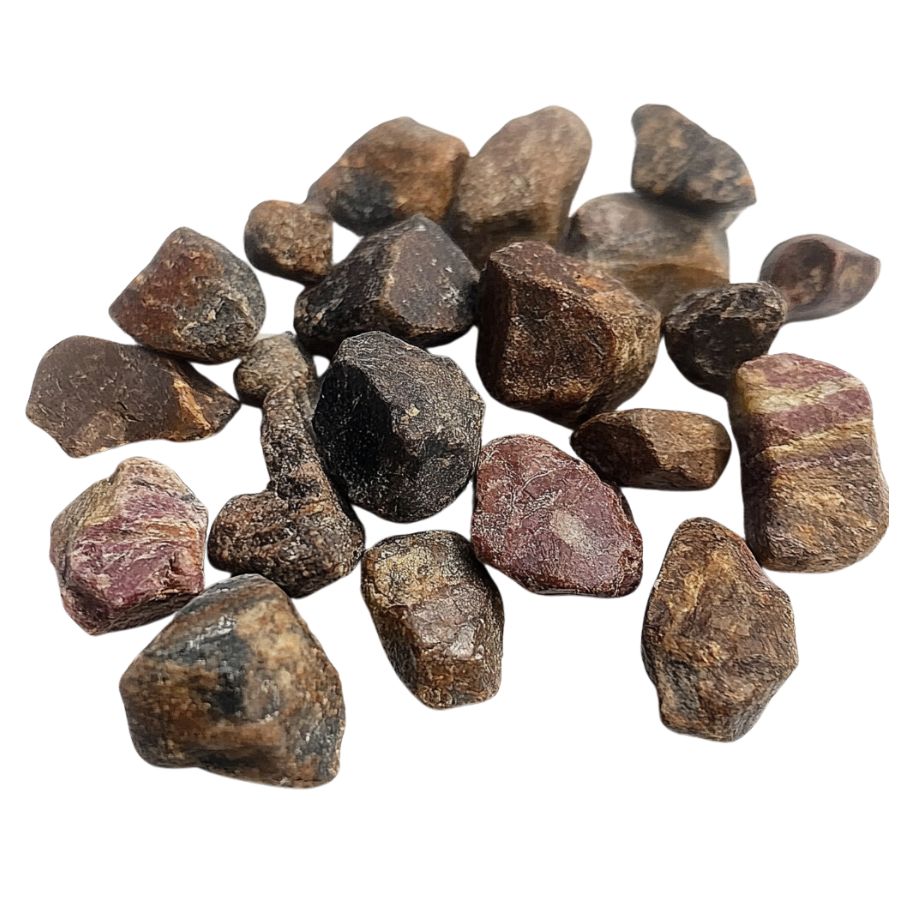
When you’re out searching for crystals in the wild, it’s essential to keep in mind that what you find won’t look like the polished stones you see in stores. One important tip is to consider what certain crystals look like in their raw, natural form.
Without the shine and smooth finish, crystals might appear rough, with jagged edges or earthy tones masking their true beauty. Understanding this can help you spot potential finds that might otherwise be overlooked.
Examine the crystal structure and shape
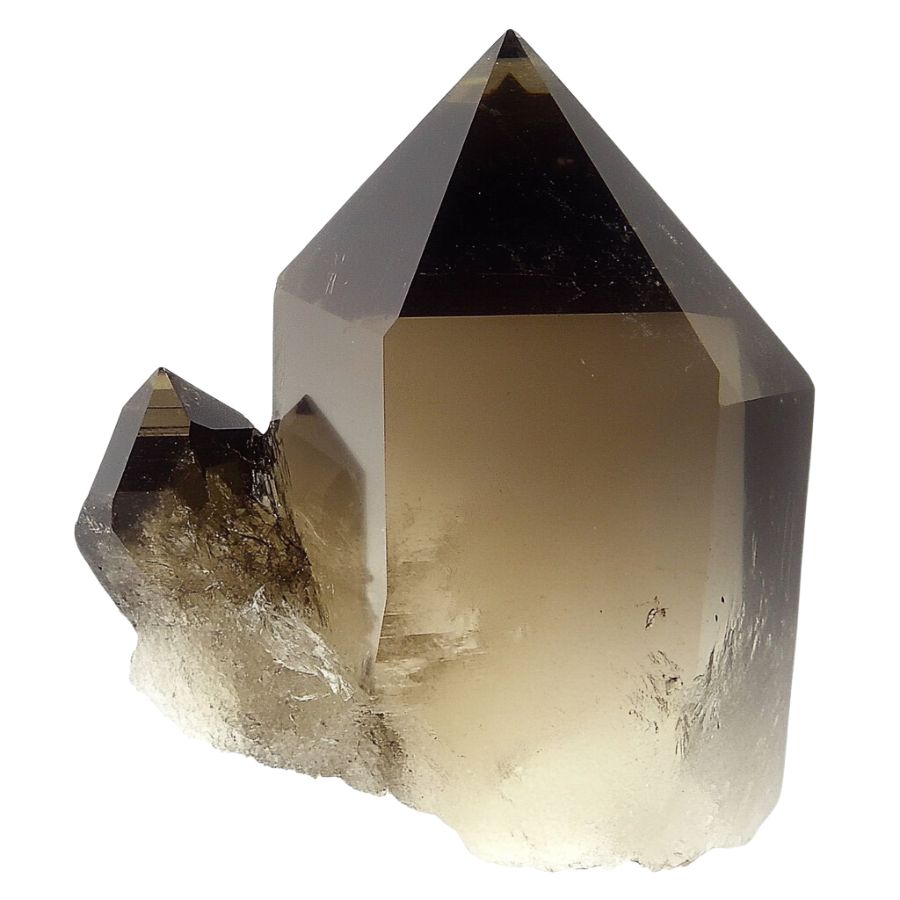
Crystals often form in specific geometric patterns that can be key to identifying them. For example, quartz is known for its hexagonal prisms, while halite typically forms cubic shapes.
By recognizing these distinct patterns, you can differentiate between various types of crystals and better understand what you’ve found.
Observe color
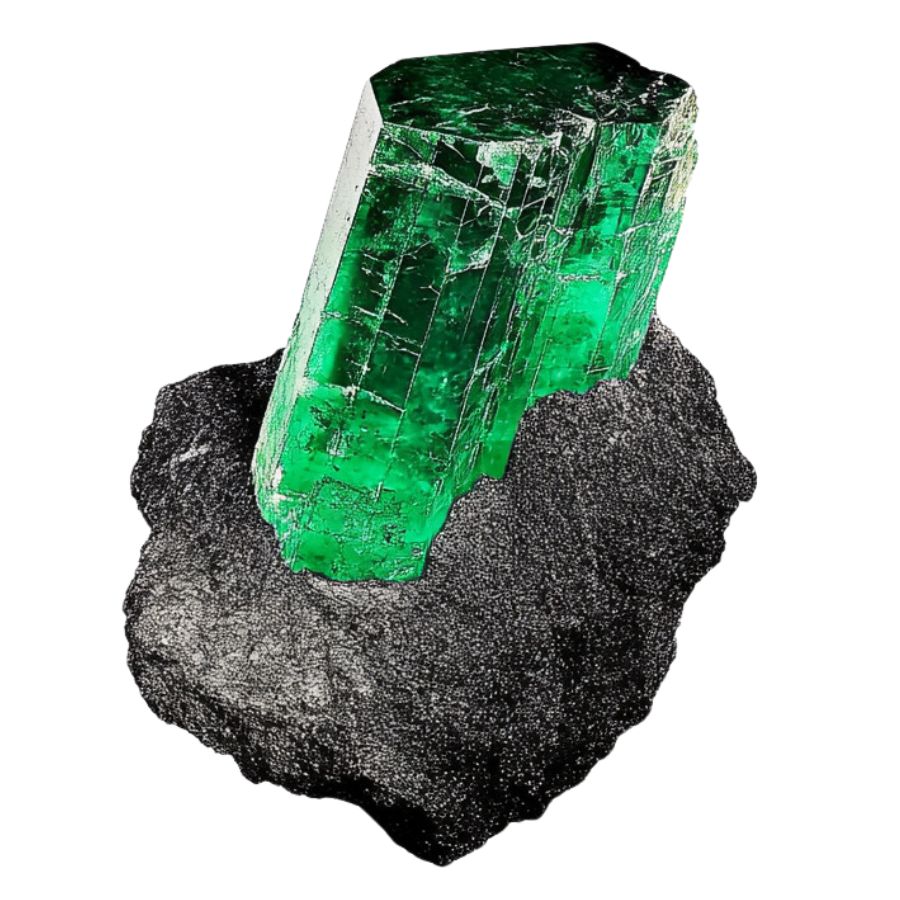
Some crystals are known for their distinct hues, like the deep purple of amethyst or the vibrant green of emerald. However, not all crystals will have strong colors; some may be clear or only slightly tinted.
Check the luster
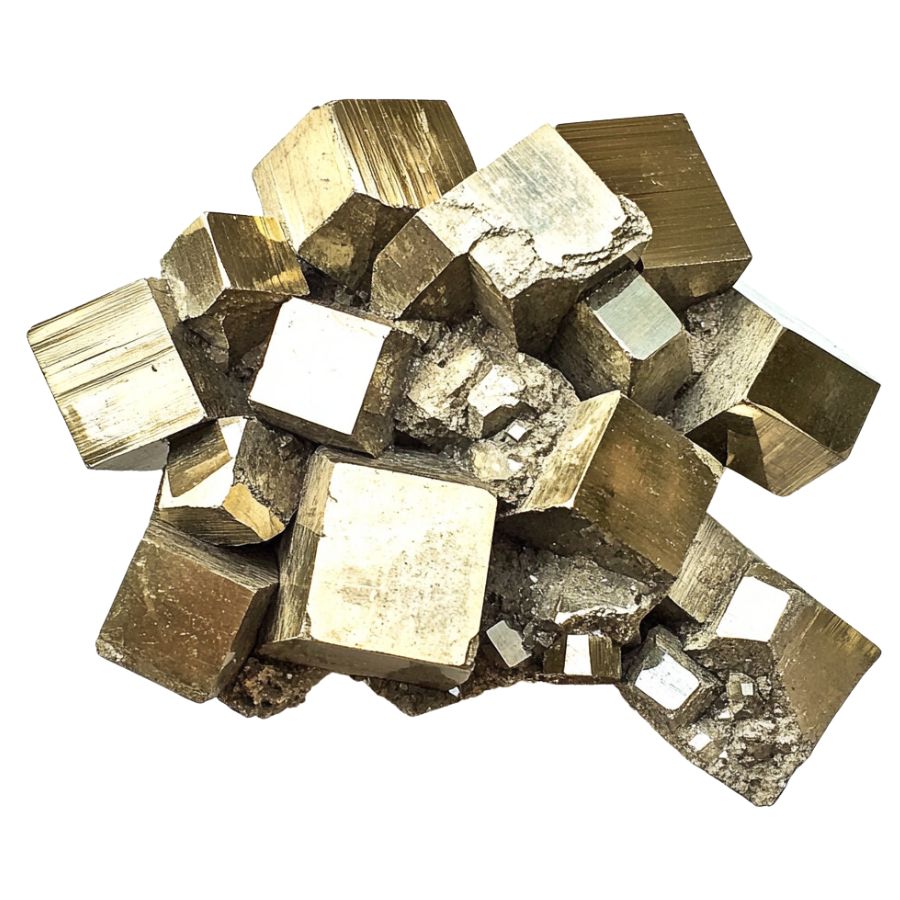
Luster refers to how a crystal’s surface interacts with light. Some crystals might have a shiny, glassy luster, while others may appear metallic or dull. This characteristic can help you determine the type of crystal you’ve found.
However, it’s important to remember that luster isn’t always obvious right away. In some cases, a crystal’s true luster will only become apparent after it’s been cleaned or polished, so keep this in mind as you examine your finds.
Evaluate the transparency
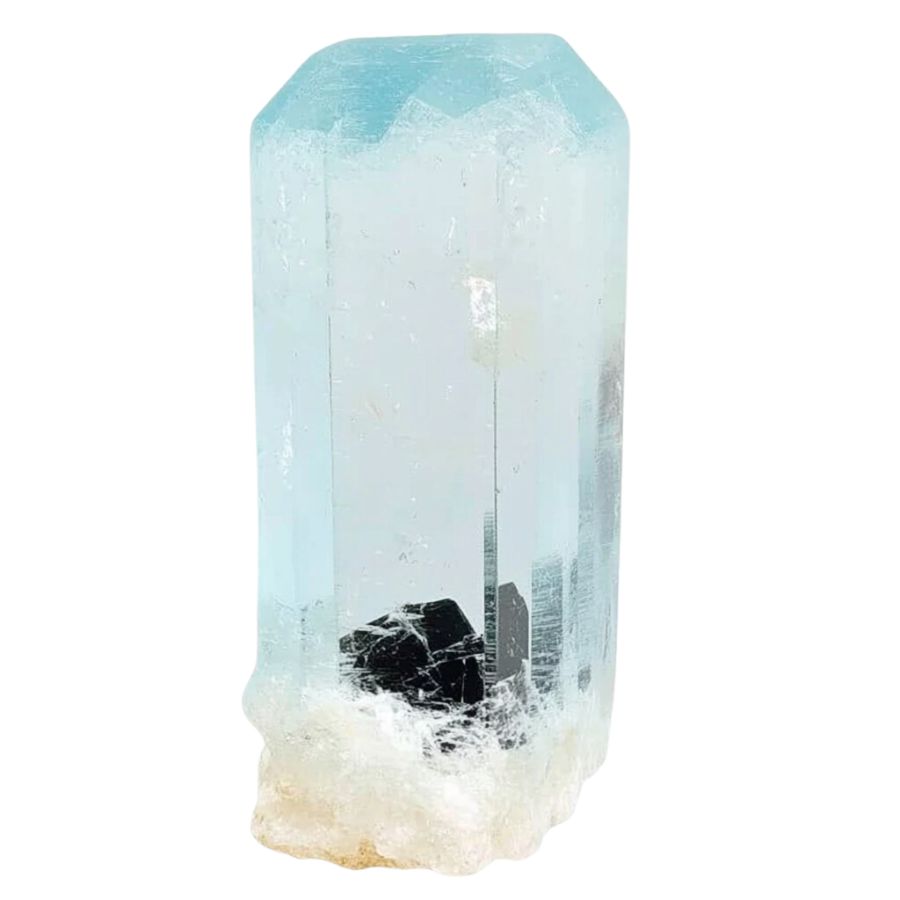
Pay close attention to how much light passes through the crystal. Some crystals are completely clear, allowing light to pass through easily, while others may be opaque and block light entirely.
You might also encounter crystals with translucent edges but opaque centers. These variations in transparency can offer valuable clues about the type of crystal you’ve found, making it easier to identify and appreciate your discovery.
A Quick Request About Collecting
Always Confirm Access and Collection Rules!
Before heading out to any of the locations on our list you need to confirm access requirements and collection rules for both public and private locations directly with the location. We haven’t personally verified every location and the access requirements and collection rules often change without notice.
Many of the locations we mention will not allow collecting but are still great places for those who love to find beautiful rocks and minerals in the wild without keeping them. We also can’t guarantee you will find anything in these locations since they are constantly changing.
Always get updated information directly from the source ahead of time to ensure responsible rockhounding. If you want even more current options it’s always a good idea to contact local rock and mineral clubs and groups
Tips on where to look
Having a better idea of where to look can greatly narrow down your search and increase your chances of finding crystals. By focusing on environments where crystals are likely to be exposed, you can spend less time searching and more time discovering.
Outcrops and Exposed Rock
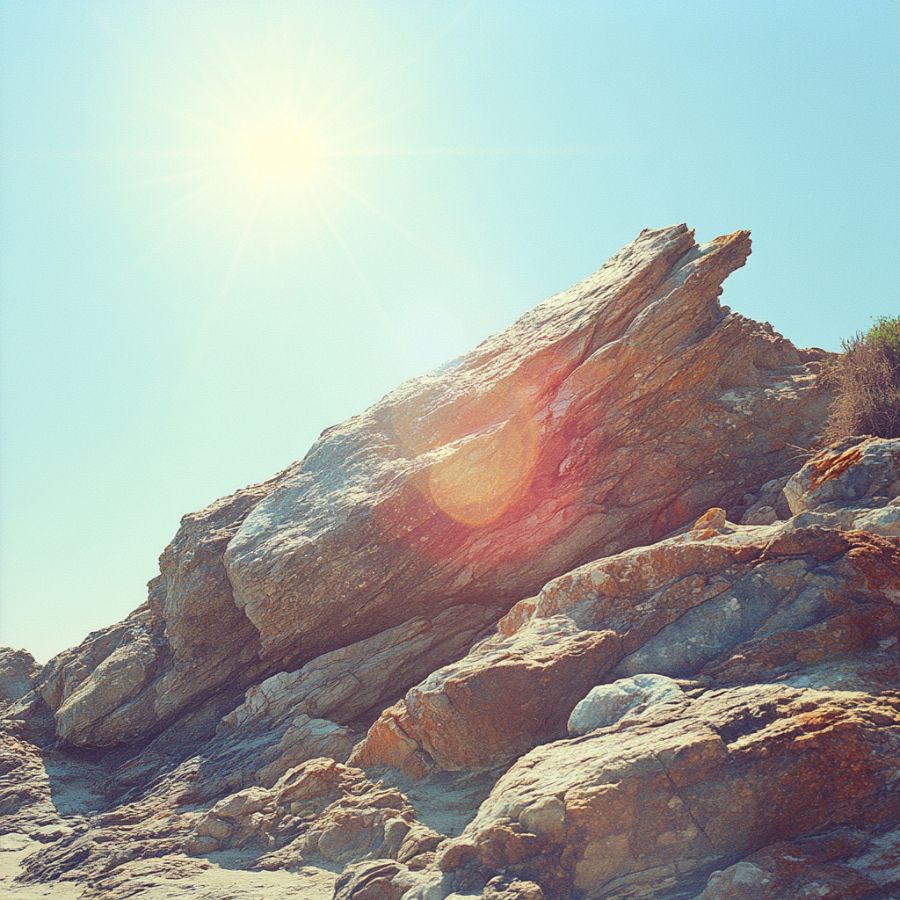
Rocky outcrops are prime locations for finding crystals and minerals. Search along the edges of outcrops, particularly where erosion has worn away the surrounding soil, revealing the rock underneath.
Pay close attention to any visible cracks, crevices, or small cavities within the outcrop, as these are often where crystals develop and can be extracted with minimal effort.
Stream Beds and Gravel Deposits
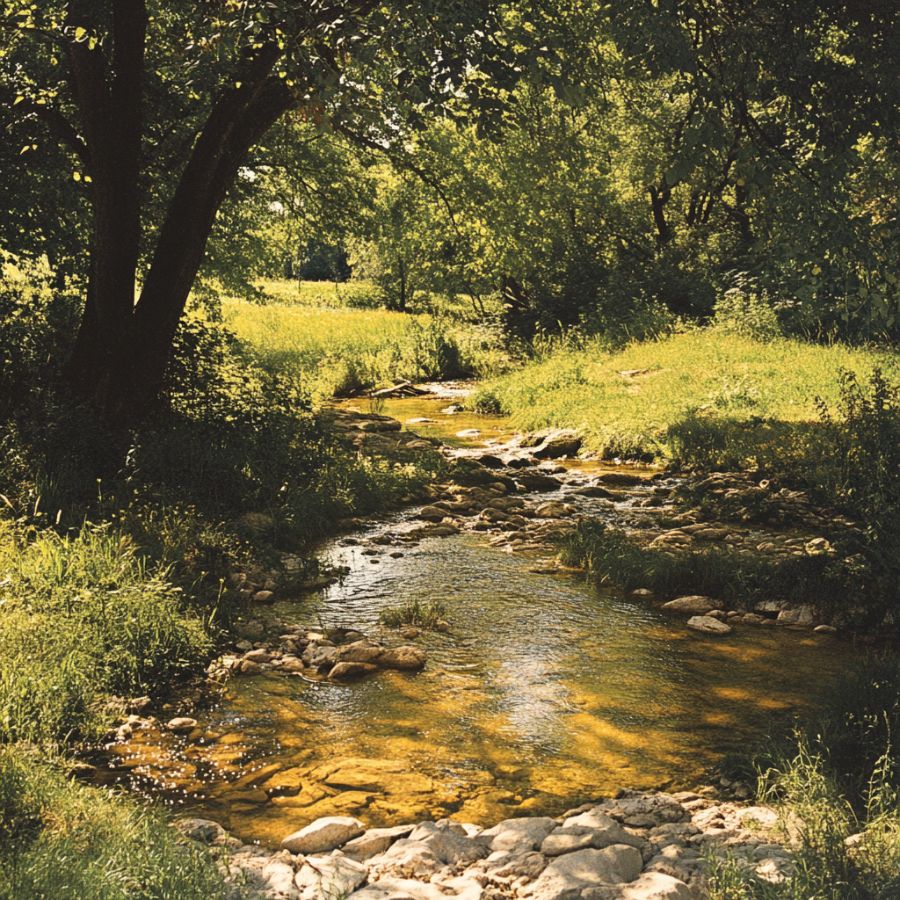
Stream beds are dynamic environments where water flow constantly shapes the landscape. Over time, water can erode rocks upstream, breaking them down and carrying mineral fragments, including crystals, downstream.
When searching in these areas, look for spots where the current has slowed, such as bends in the stream or areas behind large rocks, as these are prime locations for deposits.
Quarries and Mines
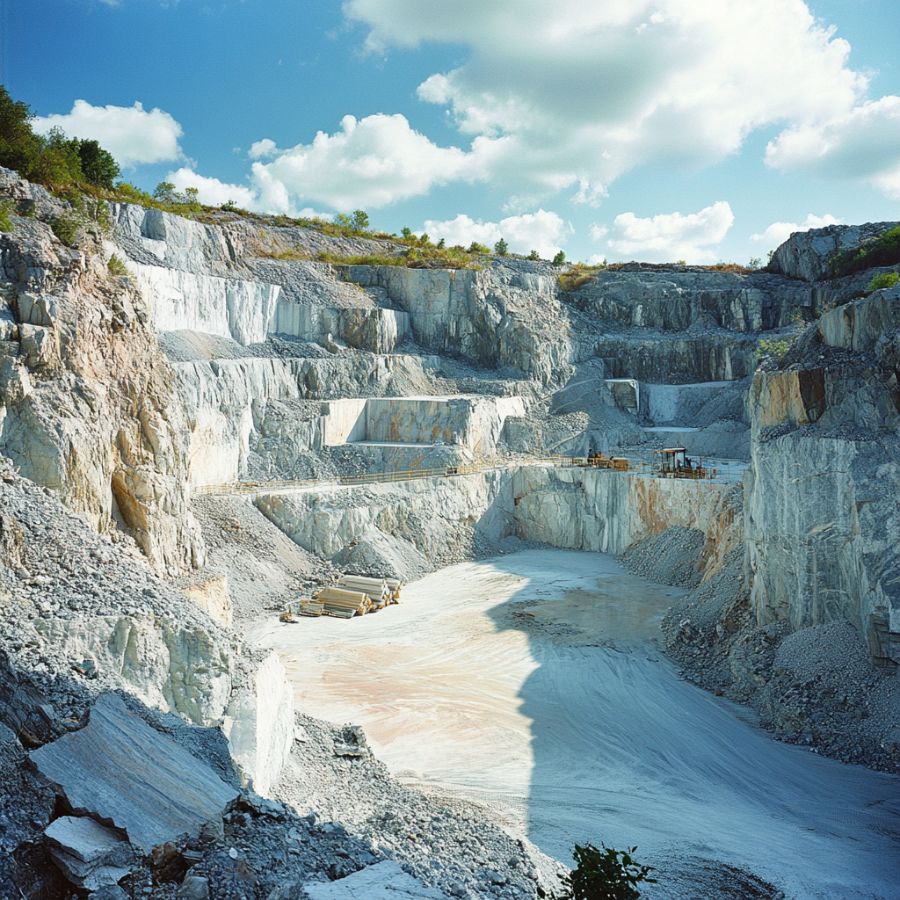
Quarries and mines are excellent places to search for crystals because they expose deep layers of rock that would otherwise be hidden beneath the surface. These sites often contain a variety of minerals and crystals that have been brought to the surface during excavation.
Pay attention to tailings piles, where waste rock is discarded, as they often contain overlooked or broken crystals. Always prioritize safety when exploring these areas and ensure that you have permission to search.
Road Cuts and Construction Sites
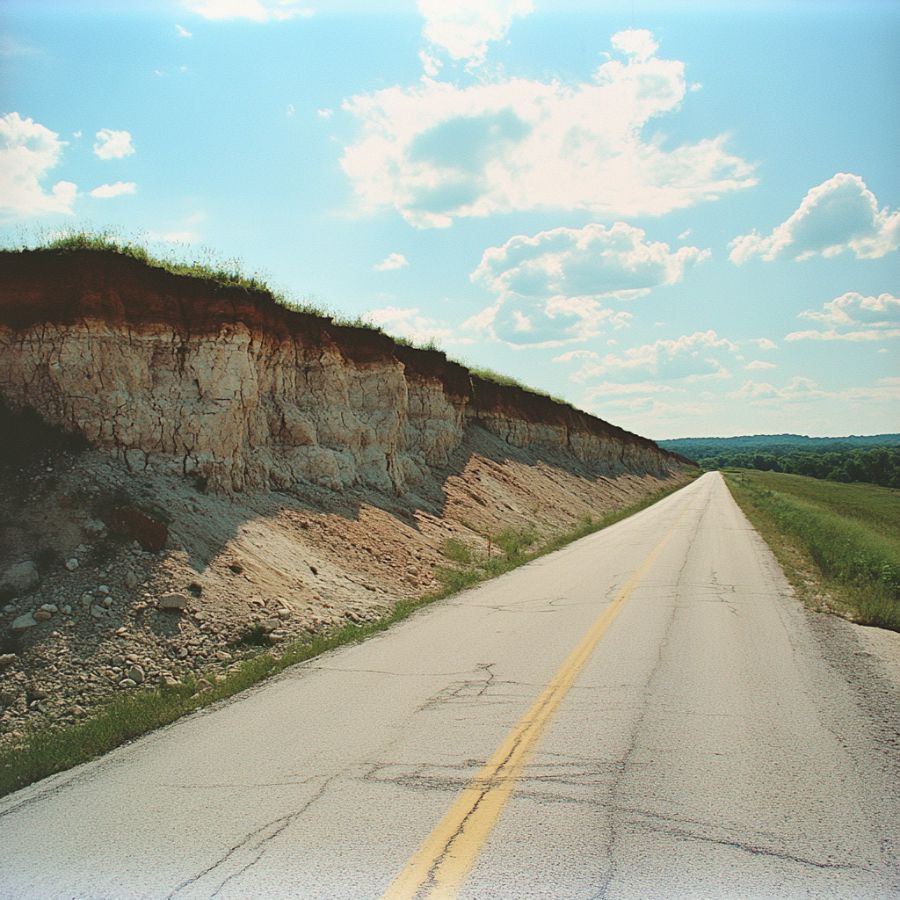
As roads are cut through hillsides or construction projects dig deep foundations, layers of rock and soil that have been undisturbed for millions of years are suddenly exposed.
Look for freshly exposed rock faces, especially where blasting has occurred, as this can create fissures or expose pockets filled with crystals. Be cautious around active construction sites, and always seek permission before exploring.
Mountainous Areas
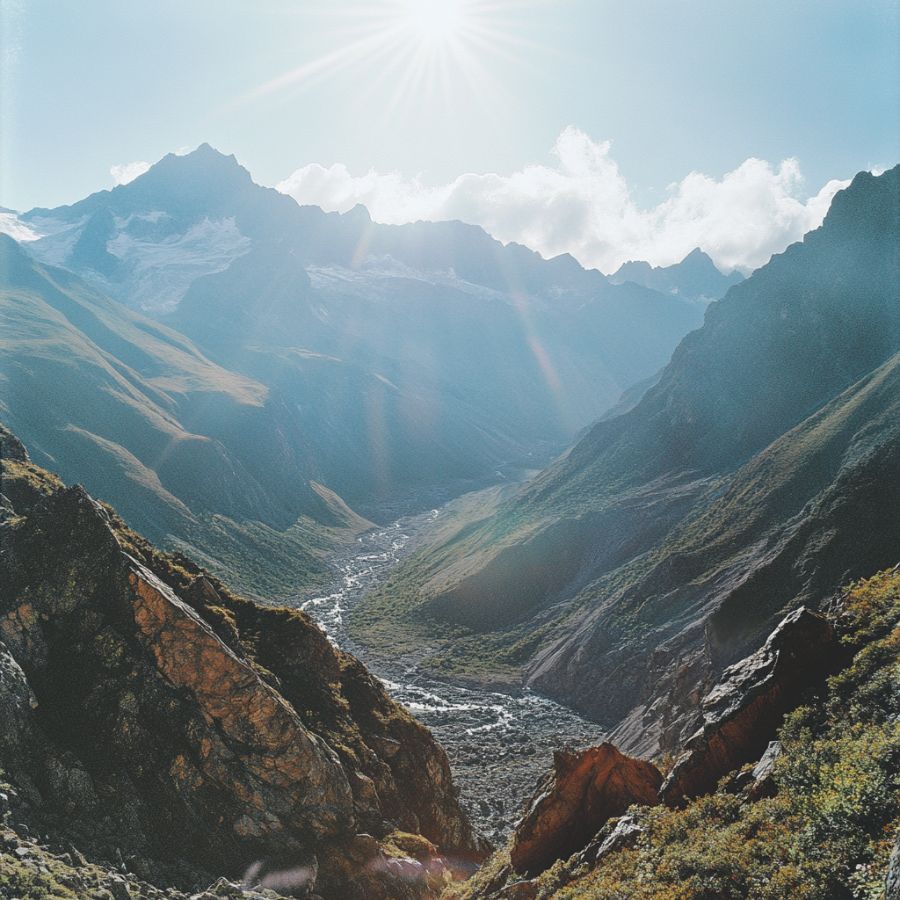
In mountainous regions, erosion caused by wind, rain, and ice can wear away the softer rock, exposing harder crystals that have formed within. Focus on weathered and broken rock formations.
Look for scree slopes, where loose rock has accumulated at the base of cliffs. Additionally, areas near fault lines or volcanic vents are particularly promising, as they often have a higher concentration of minerals.
DON'T MISS OUT ON ANY GREAT FINDS!
While you're out searching for Crystals you're going to find A LOT of other interesting rocks and minerals along the way. The last thing you want to do is toss out something really interesting or valuable. It can be easy to misidentify things without a little guidance.
We've put together a fantastic field guide that makes identifying 140 of the most interesting and valuable rocks and minerals you will find REALLY EASY. It's simple to use, really durable, and will allow you to identify just about any rock and mineral you come across. Make sure you bring it along on your hunt!
The Mining Laws And Regulations You Should Know
While Nevada is a treasure trove for crystal hunters, it’s important to understand and follow the state’s recreational crystal hunting regulations to ensure a responsible and enjoyable experience.
The following is a general overview, and specific locations or land management agencies may have additional rules or restrictions.
The state is a mix of private, federal, state, and tribal lands. Respect land ownership by obtaining permission before collecting on private property. For public lands, familiarize yourself with the managing agency’s rules and regulations, as they can vary from one location to another.
Some public lands allow the casual collecting of small quantities of rocks, minerals, and semi-precious gemstones for personal use. However, commercial collection or large-scale extraction is generally not permitted without proper permits or claims from the Nevada Bureau of Land Management.
- The extensive local experience and understanding of our team
- Input from multiple local crystal hunters and crystal collecting groups
- The accessibility of the crystal mining locations
- Safety and potential hazards when collecting
- Private and public locations
- A desire to include locations for both experienced crystal hunters and those who are just starting out
Using these weights we think we’ve put together the best list out there for those who love finding new crystals for our collections!
The Best Locations For Crystal Mining in Nevada
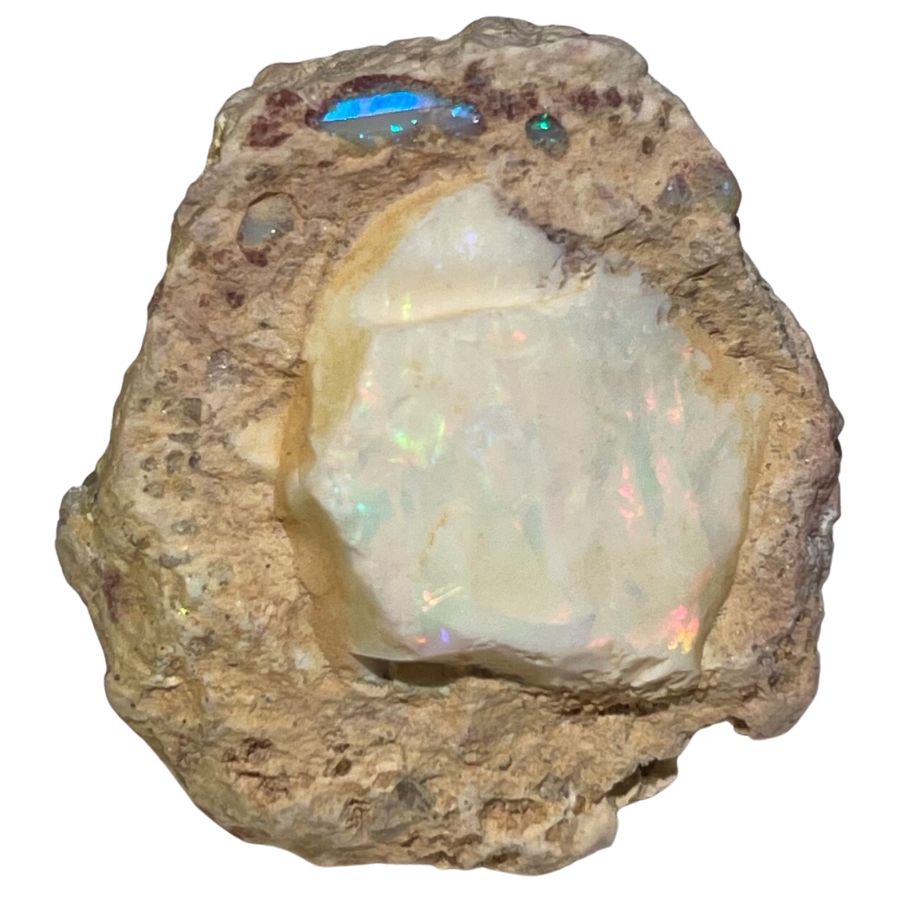
If you can only visit a few places, these are the ones we recommend. They have worked best for us, and we think you will too.
Always Confirm Access and Collection Rules!
Before heading out to any of the locations on our list you need to confirm access requirements and collection rules for both public and private locations directly with the location. We haven’t personally verified every location and the access requirements and collection rules often change without notice.
Many of the locations we mention will not allow collecting but are still great places for those who love to find beautiful rocks and minerals in the wild without keeping them. We also can’t guarantee you will find anything in these locations since they are constantly changing.
Always get updated information directly from the source ahead of time to ensure responsible rockhounding. If you want even more current options it’s always a good idea to contact local rock and mineral clubs and groups
Las Vegas Wash
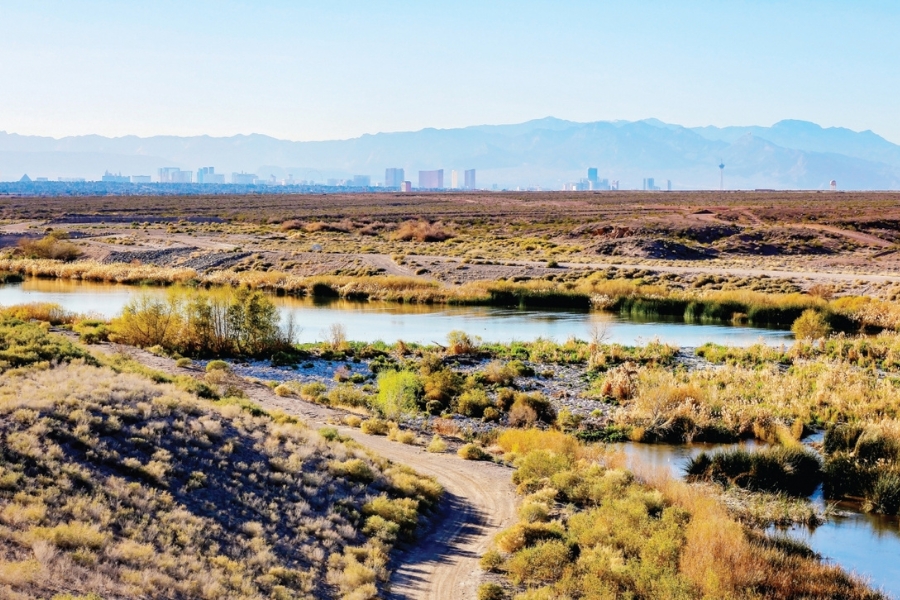
The 12-mile-long Las Vegas Wash is a natural channel that has been essential to the area’s history and environment. It gets its water from natural springs and urban runoff and flows into Lake Mead.
Historically, the Wash was a vital water source for Native American tribes and later for settlers. It has changed over time due to urbanization and natural changes, but it’s still an essential ecological zone that supports a wide range of wild species.
The Wash is attractive because it’s an excellent place to look for crystals and has historical and ecological value. You can enjoy the area’s natural beauty while learning how it helped the region grow.
Where we found crystals at the Las Vegas Wash
The areas around the Wash, where water has flowed and worn away at the ground, often hide mineral gems.
Quartz, one of the most common crystals in the state, is often found here, along with other mineral specimens.
Cold Springs Valley
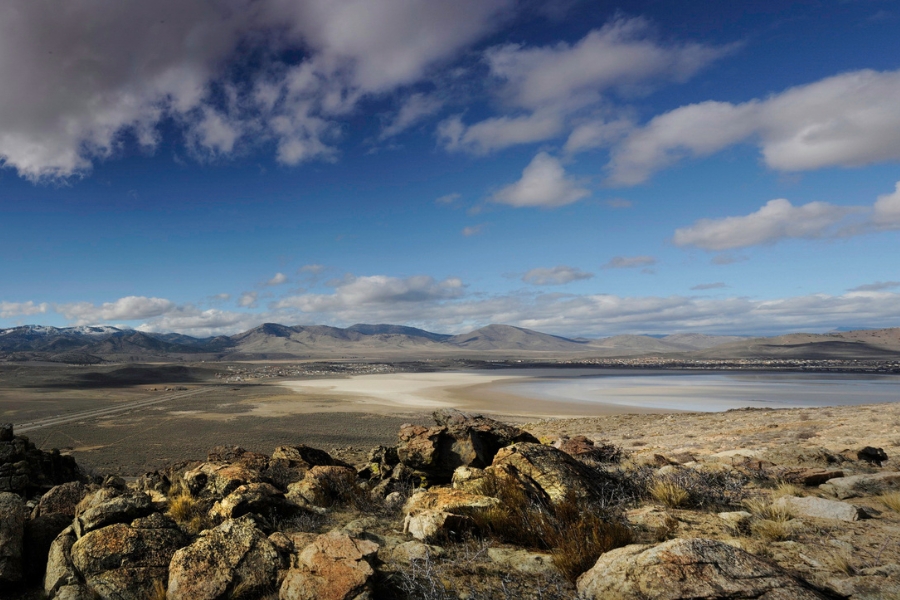
There is a lot of natural beauty and history in Cold Springs Valley. With its rough terrain and stunning views, this peaceful valley has been a part of the state’s history for hundreds of years.
Native American tribes were the first people to live there, and later, settlers and miners moving west made it their destination. The valley’s history is closely linked to the state’s mining boom in the 1800s and early 1900s.
Cold Spring Valley is one of the ideal places to find gems in Nevada. From quartz and agate to jasper and garnet, the variety of crystals waiting to be discovered is genuinely astonishing.
The picturesque landscape, characterized by rolling hills, rugged cliffs, and serene meadows, only adds to the valley’s allure, making it a perfect escape for anyone seeking solace in nature.
Where we found crystals at the Cold Springs Valley
Many different crystals can be found in the landscape’s rocky hills and stream beds, like quartz, azurite, chrysocolla, hematite, and malachite.
DON'T MISS OUT ON ANY GREAT FINDS!
While you're out searching for Crystals you're going to find A LOT of other interesting rocks and minerals along the way. The last thing you want to do is toss out something really interesting or valuable. It can be easy to misidentify things without a little guidance.
We've put together a fantastic field guide that makes identifying 140 of the most interesting and valuable rocks and minerals you will find REALLY EASY. It's simple to use, really durable, and will allow you to identify just about any rock and mineral you come across. Make sure you bring it along on your hunt!
Copper King Mine
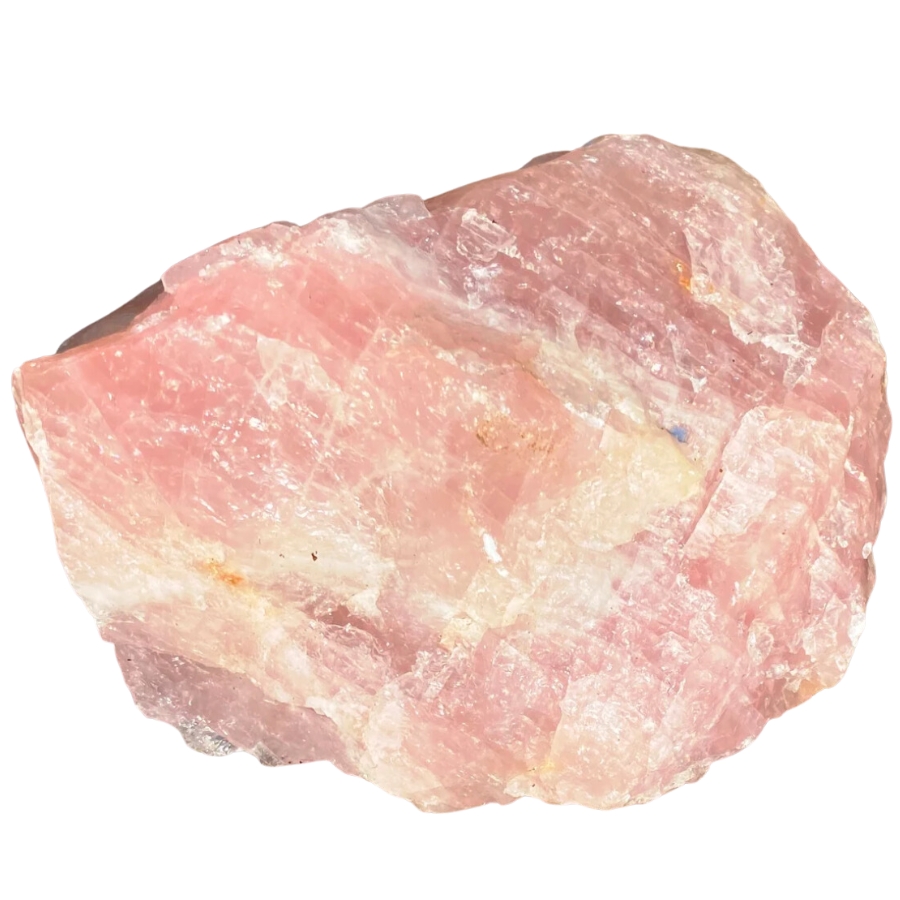
The Copper King Mine has a lot of mining history and geological interest. It was built during the state’s mining boom and is an excellent example of how the state has been a primary source of minerals.
The mine was mainly used for copper extraction, which shows how rich the area is in minerals. Over the years, it attracted prospectors and made a big difference in the local economy, typical of the history of mining in our state.
The mine and its surroundings bring the past to life by showing how mining was done and the challenges faced in the past.
Where we found crystals at Copper King Mine
Crystals of rose quartz and turquoise can be discovered at the area pegmatite outcrops of Copper King Mine. To know how much crystals cost, check out this guide for insights on determining their price.
Lahontan Reservoir
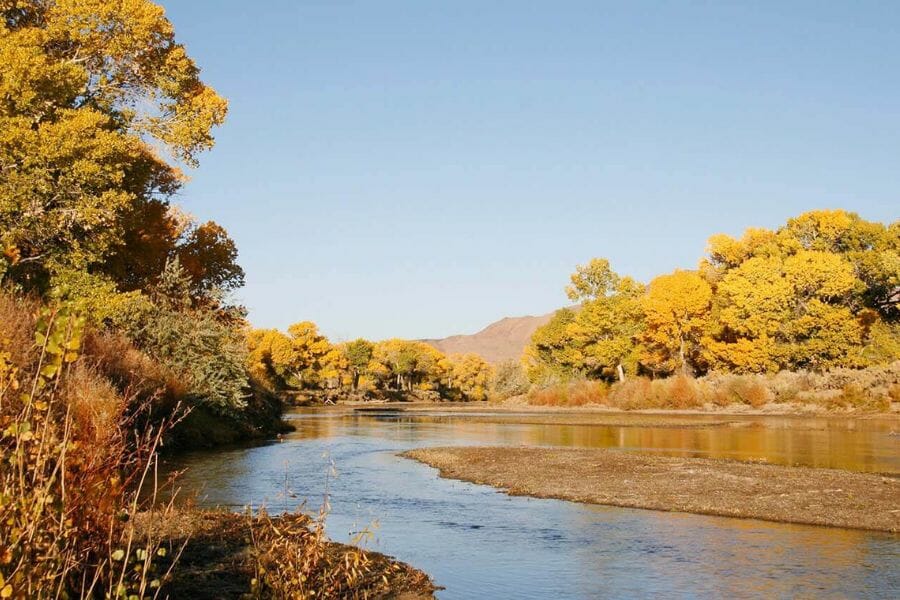
The Lahontan Reservoir is an important landmark with a fascinating geological history. It was built in the early 1900s as part of the Newlands Reclamation Project and was a key part of turning the dry area into arable land.
It was named after the ancient Lake Lahontan, which covered much of the state, and it’s now a vital water source for irrigation and a popular place for recreation.
The changing levels of the reservoir’s water, especially during droughts, reveal large areas of land that were submerged before. Old volcanic activity in the area has produced a variety of minerals, marking its geological history.
There are beautiful views and fun things to do at Lahontan Reservoir. You can go fishing, boating, camping, and more, making it a flexible place to visit!
Where we found crystals at Lahontan Reservoir
Agate, chalcedony, and jasper crystals can be found on the surface and northeast shore of the Lahontan Reservoir. The exposed lakebeds and surrounding areas are also potential hotspots for finding crystals.
Palmetto Canyon
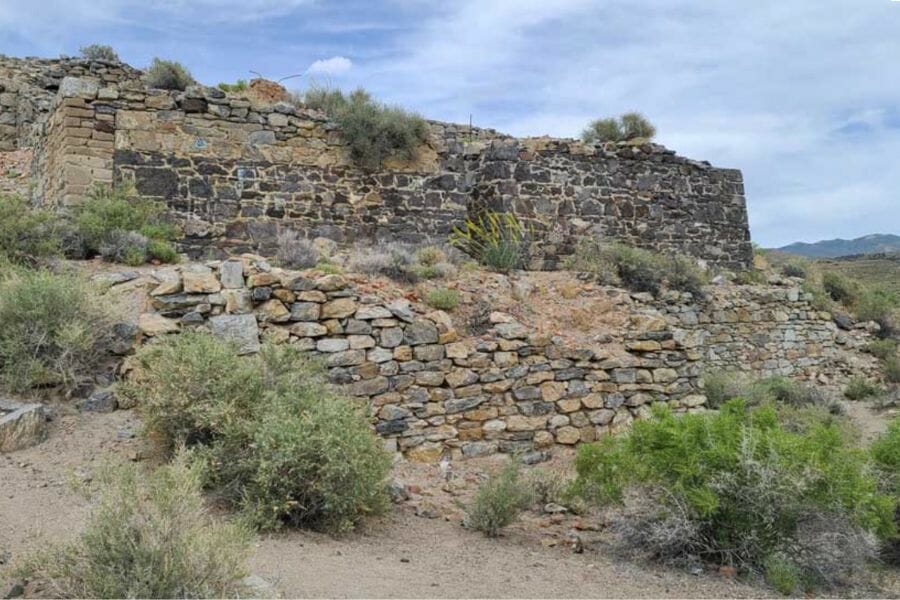
The Palmetto Canyon area is both beautiful and full of history. The canyon is known for its rough terrain and beautiful landscapes.
Native Americans have inhabited the area and later by people exploring and mining in the 19th and 20th centuries.
During the state’s famous mining booms, the area was especially renowned for silver mining, leaving a legacy of historical sites and stories.
Palmetto Canyon shows how wild and raw the state’s landscape is. Its historical importance and wide range of geological features make it a great place to visit for people interested in nature and the history of the American West.
The canyon’s calm and mostly unspoiled environment makes it an excellent place for adventure, discovery, and fun!
Where we found crystals at Palmetto Canyon
The eroded volcanic rocks and sedimentary layers exposed in the canyon walls and creek beds are ideal places to search for agate, citrine, jasper, and quartz crystals.
Rainbow Ridge Mine
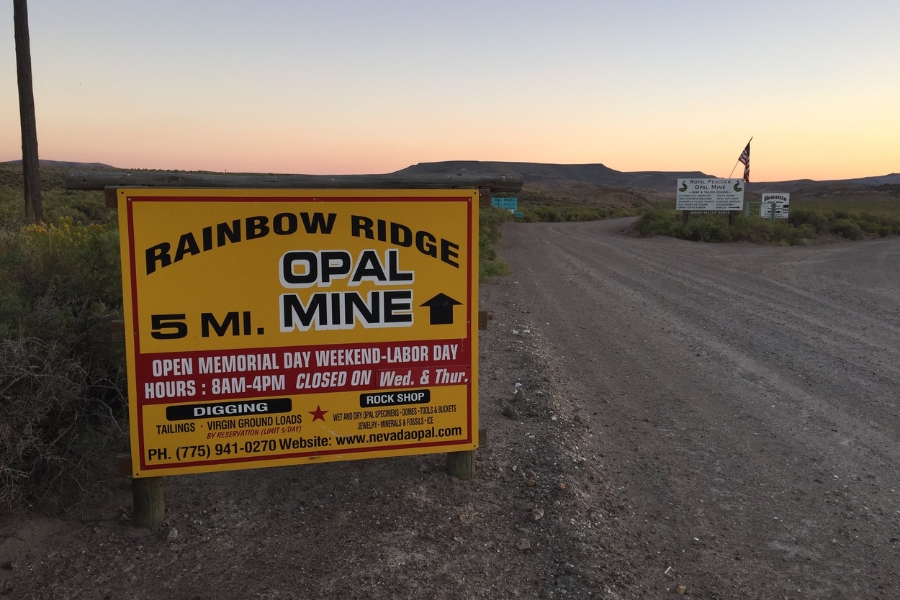
Putnam County, NY
Rainbow Ridge Opal Mine in Virgin Valley is famous for having a lot of valuable opals. This area, part of the larger opal fields, has been a significant source of these gemstones since the early 1900s.
Enthusiasts from all over the world come to the mine to see its high-quality black opals. Its history is an important part of the state’s opal mining story.
These opals are very popular because of their beautiful colors and unique patterns. The way they were formed is connected to the area’s ancient geological past.
Silica-rich waters seeped into wood that broke down and hardened over time, creating these valuable crystals.
In Rainbow Ridge Opal Mine, you can look for your opals in the mine waste, giving you hands-on experience in opal mining. This activity connects you to the earth’s geological processes and gives you the thrill of discovery!
Where we found crystals at Rainbow Ridge Mine
Opals and other crystals are primarily found in the mine’s tailings, the piles of rock and soil that were dug up and thrown away after the mining process.
People like to search these tailings because they often have opals and other minerals that were missed during mining.
My Other Favorite Places For Crystal Hunting
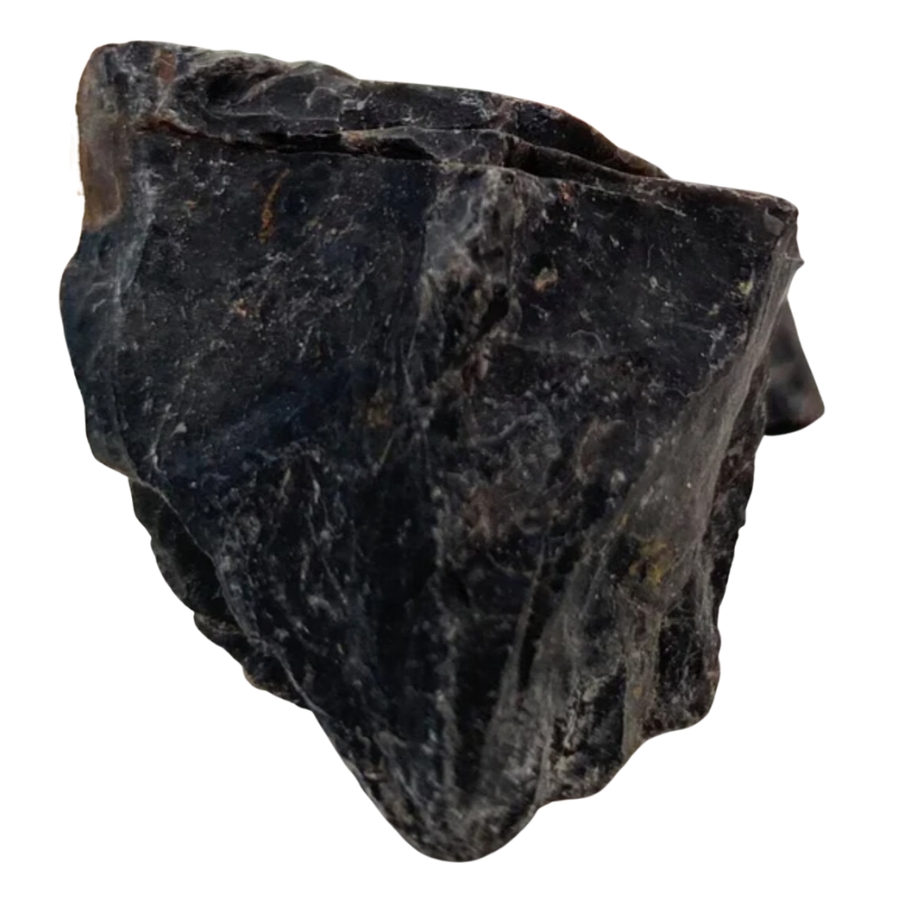
After telling you about our top six crystal-hunting spots, we wanted to give you more options. Because the state has such a large and varied geography, there are many great places to go crystal hunting, including geode-hunting spots.
Where you can find crystals for free
Let’s start by discussing a few places to look for free things. Although many amazing places have entrance fees, other locations are free to visit.
| County | Location |
| Clark | Area surfaces and range of low hills for chalcedony, jasper, and onyx |
| Elko | Area gravels surfaces and outcrops of Tuscarora for citrine and rose quartz |
| Esmeralda | Area draws, washes, surfaces in Coaldale for agate, jasper, opal, and turquoise |
| Esmeralda | All regional surfaces of Goldfield for chalcedony, jasper, obsidian, and quartz |
| Esmeralda | At the area slopes of Gold Mountain at Tokop for citrine and quartz |
| Eureka | Ruby Hill district for azurite and malachite |
| Humboldt | Area regional land surfaces for agate, chalcedony, jasper, and opal |
| Humboldt | Rough dirt roads at Kings River Valley and area surfaces of Agate Point for agate, chalcedony, and jasper |
| Lincoln | Sugar Loaf Peak for turquoise |
| Nye | Old site of Bullforg and area mines in Tertiary volcanics for azurite, amethyst, and malachite |
| Pershing | Gypsy Queen Canyon and Bullion Canyon for dumortierite and quartz |
| Washoe | Area draws, fields, land surfaces, and washes for agate, garnet, and obsidian |
Other great places to dig for crystals
If you want to pay, you can also search for crystal at the following sites. Depending on the season, the cost may change or even be free. Before visiting the locations, you ought to contact them.
| County | Location |
| Clark | Area mines at Bullion district for azurite, chrysocolla, and malachite |
| Elko | Area mines at Mountain City for azurite and malachite |
| Esmeralda | Bonnie Blue Mine for turquoise |
| Washoe | Burrus Mine for azurite |
The Best Crystal Shops In The Area
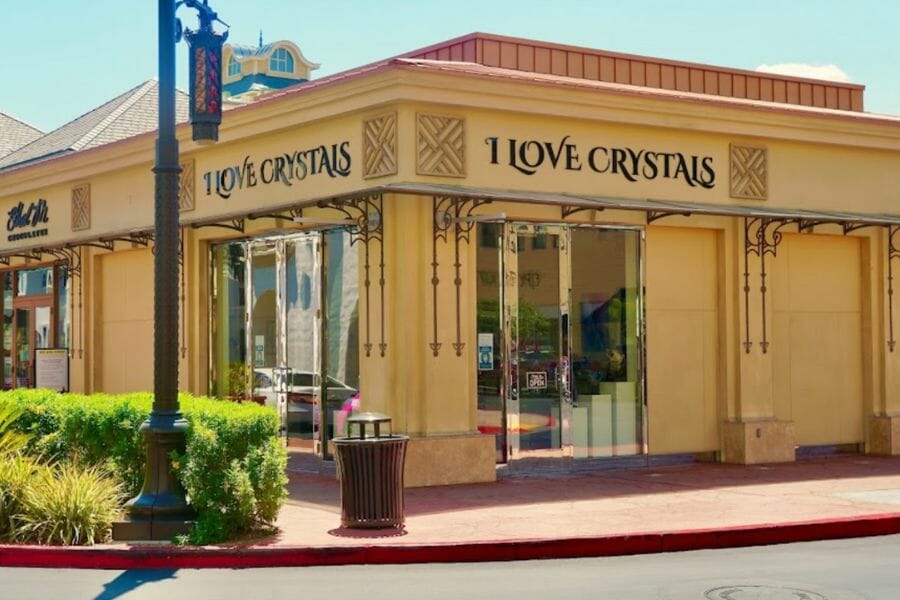
It might be intimidating for someone who merely wants to bring home something exceptional for their collection because of the numerous crystal reserves dispersed throughout our state.
If you don’t mind spending a little money to see so many different crystals in one location, you might want to check out the nearby crystal shops:
- Cabin Creek Crystals – 770 S Virginia St, Reno, NV 89501
- Crystal Alley Emporium – 2841 N Green Valley Pkwy, Henderson, NV 89014
- Crystal Cove Reno – 20 Hillcrest Dr, Reno, NV 89509
- Crystal Plaza – 224 Vassar St, Reno, NV 89502
- Earthe Energy – 1023 Rock Blvd A, Sparks, NV 89431
- I Love Crystals – 6643 Las Vegas Blvd S Suite B-121, Las Vegas, NV 89119
- Jewelry & Minerals Las Vegas – 410 E Sahara Ave, Las Vegas, NV 89104
- The Realms Within – 2800 W Sahara Ave Suite 3A, Las Vegas, NV 89102
- Vegas Crystal Healings – 10740 S Eastern Ave #105, Henderson, NV 89052
- Queendom Cultivation – 8450 W Sahara Ave suite 109-110, Las Vegas, NV 89117
Additional places to find crystals in nearby states
If you’ve already tried all of our recommendations above or are planning a trip out of the state, you should check out our guides for neighboring states:
If you have any recommendations we haven’t covered please leave them in the comments below!

